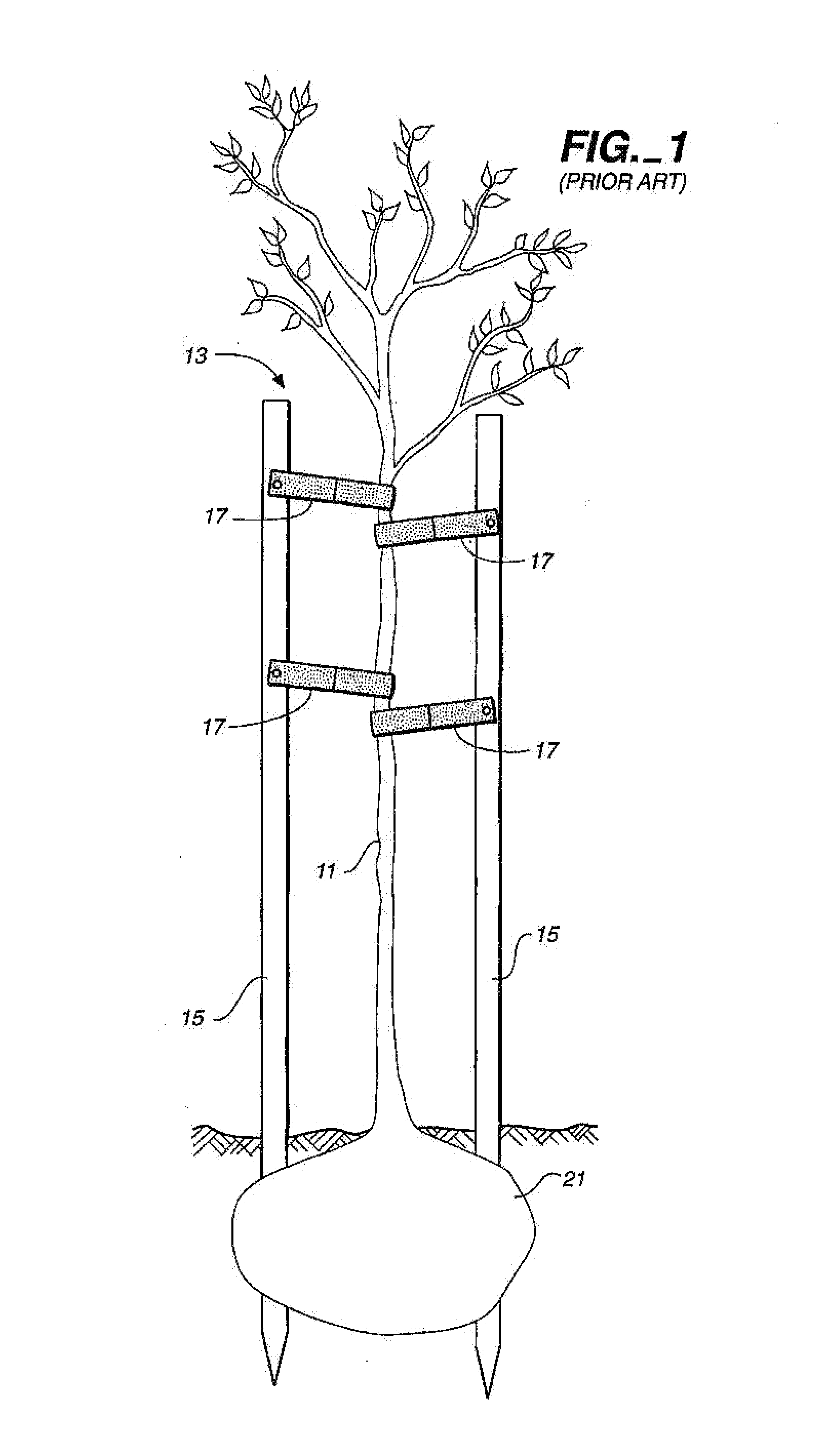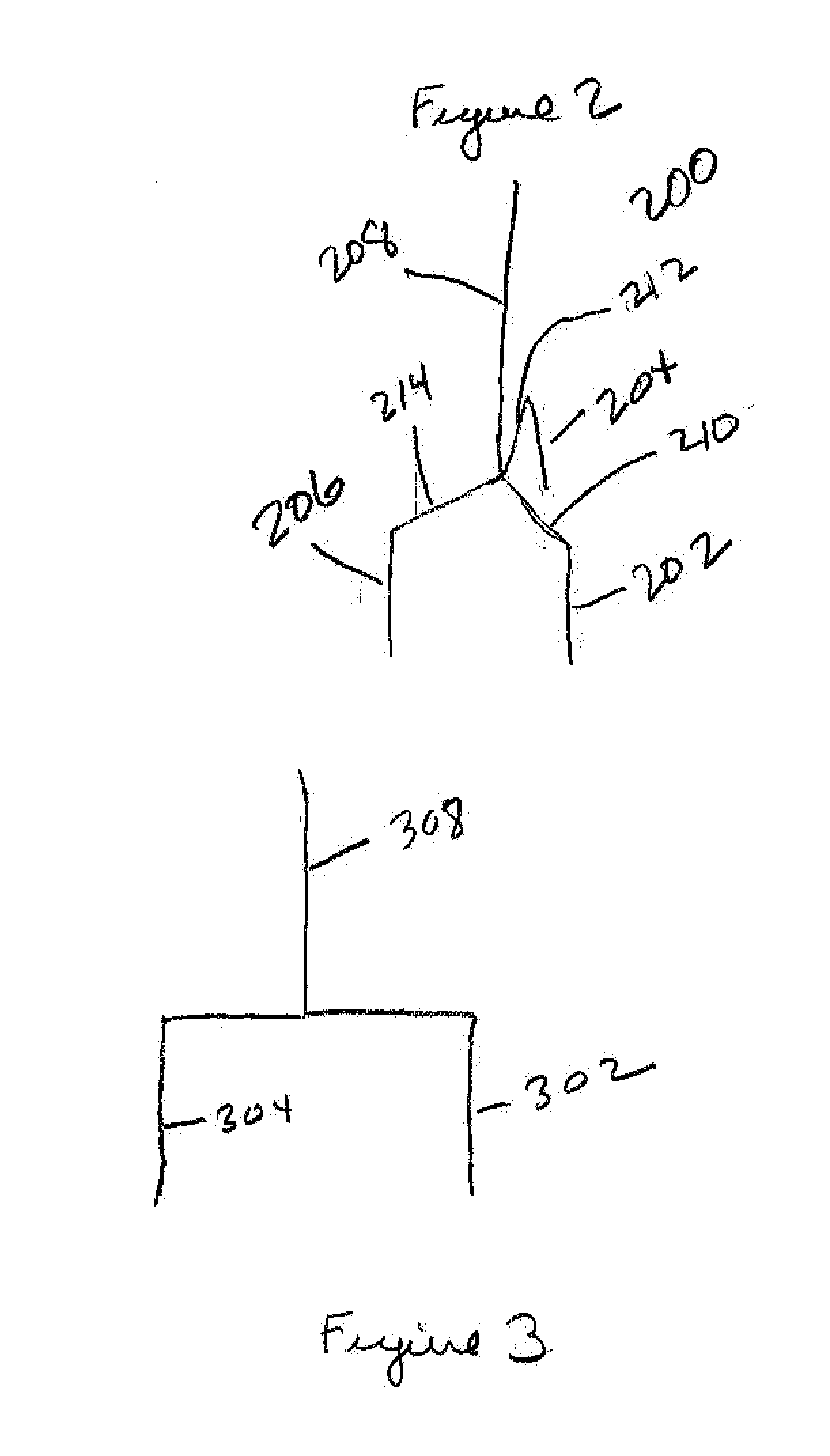Tree stake
a tree and stake technology, applied in the field of tree stakes, can solve the problems of inherently damaging the root ball, affecting the health and proper growth of the tree, and preventing the effect of tipped
- Summary
- Abstract
- Description
- Claims
- Application Information
AI Technical Summary
Benefits of technology
Problems solved by technology
Method used
Image
Examples
Embodiment Construction
[0015]FIG. 1 illustrates a perspective view of the tree stake 200 of the present invention. The tree stake 200 may be formed from rigid rods of metal including steel, plastic, wood or other such suitable material. The tree stake 200 includes a first anchor member 202, a second anchor member 204 and a third anchor member 206. The first anchor member 202, the second anchor member 204 and the third anchor member 206 may be formed from rigid rods which are positioned so that the first anchor member 202, the second anchor member 204 and the third anchor member 206 surround the periphery of the root ball of the young tree without the need to penetrate the root ball. The anchor members 202, 204, 206 are formed in the general longitudinal direction of the tree stake 200. The anchor members 202, 204, 206 form a stable base for the tree stake 200. The central longitudinal member 208 is formed in the general longitudinal direction of the tree stake 200. The central longitudinal member 208 can ...
PUM
 Login to View More
Login to View More Abstract
Description
Claims
Application Information
 Login to View More
Login to View More - R&D
- Intellectual Property
- Life Sciences
- Materials
- Tech Scout
- Unparalleled Data Quality
- Higher Quality Content
- 60% Fewer Hallucinations
Browse by: Latest US Patents, China's latest patents, Technical Efficacy Thesaurus, Application Domain, Technology Topic, Popular Technical Reports.
© 2025 PatSnap. All rights reserved.Legal|Privacy policy|Modern Slavery Act Transparency Statement|Sitemap|About US| Contact US: help@patsnap.com



